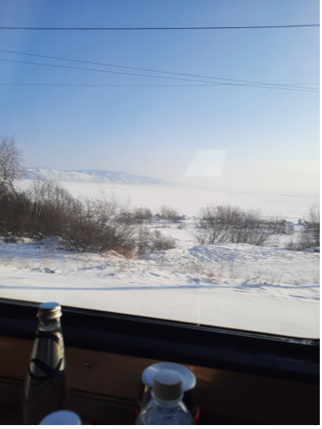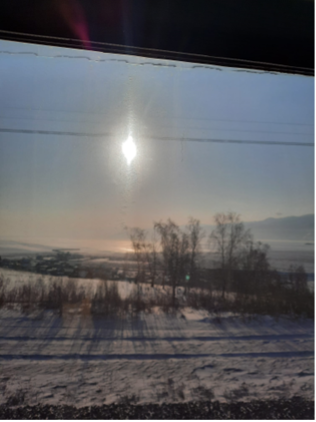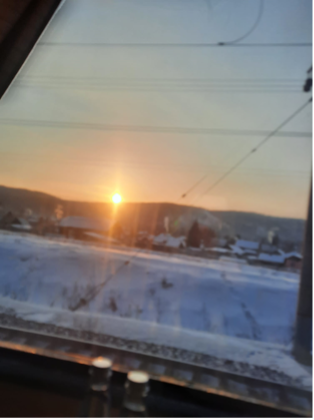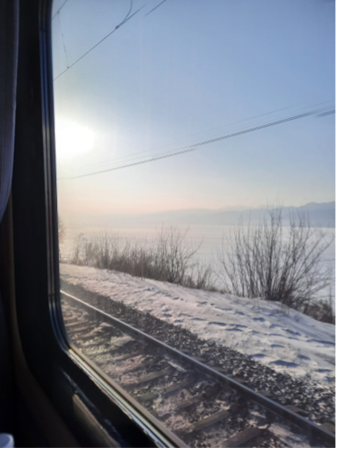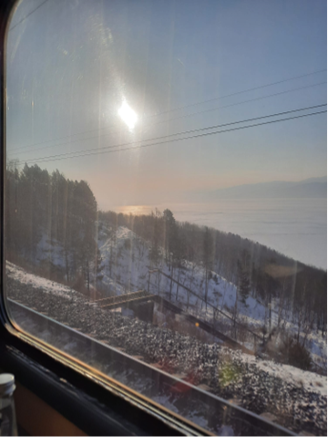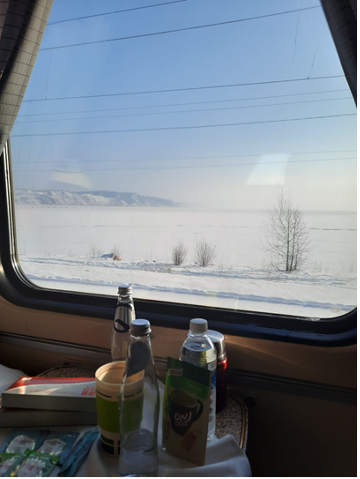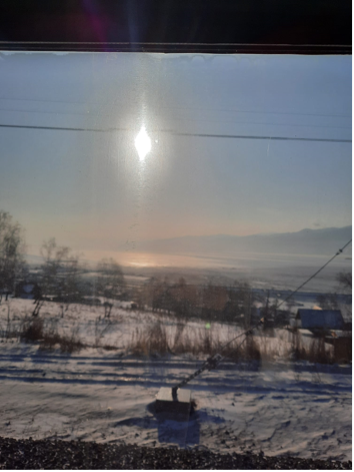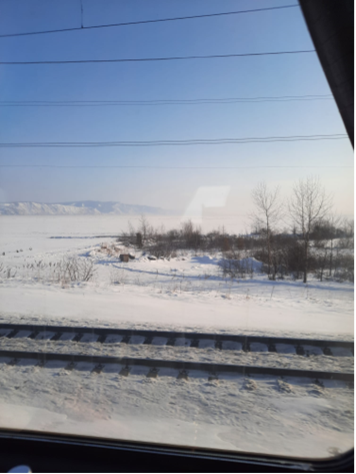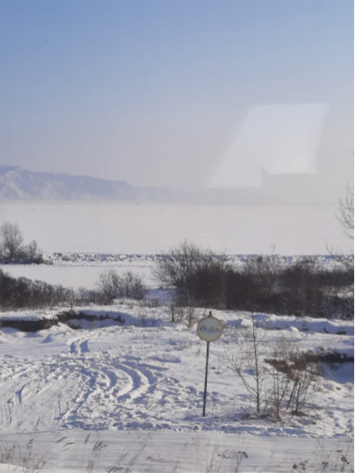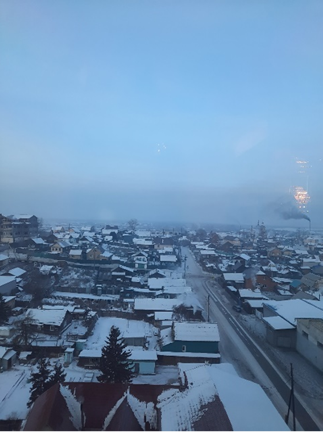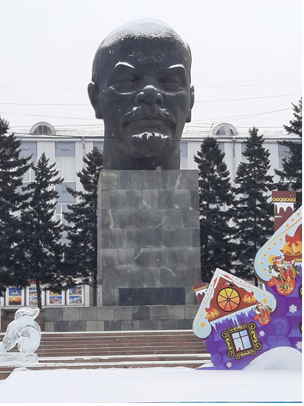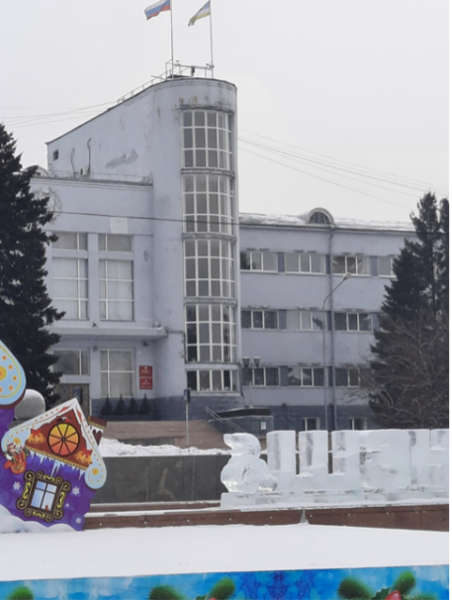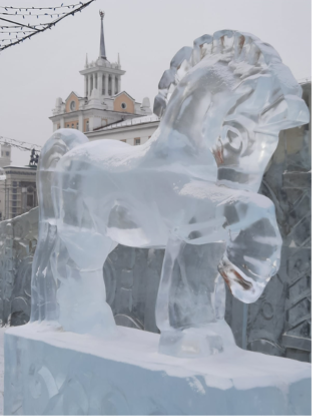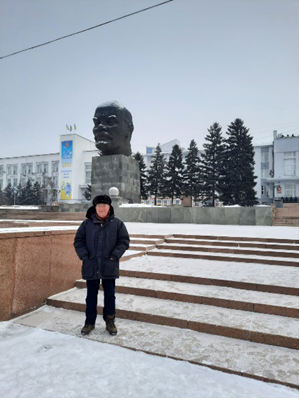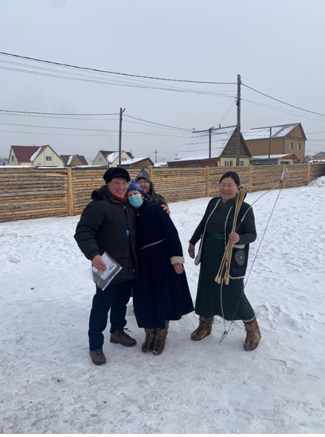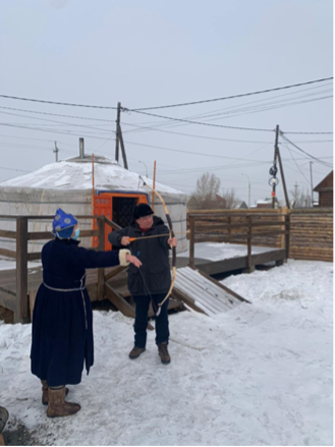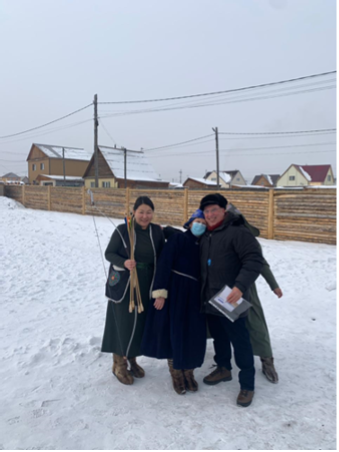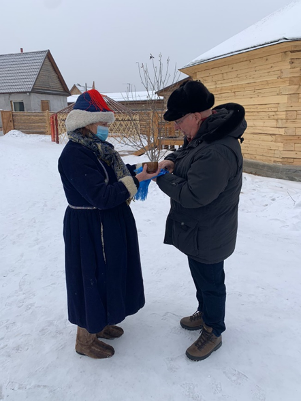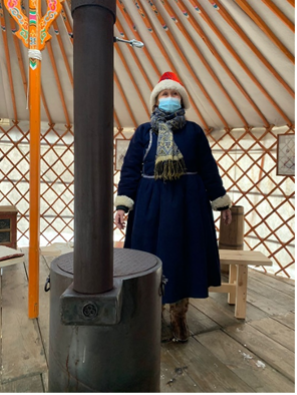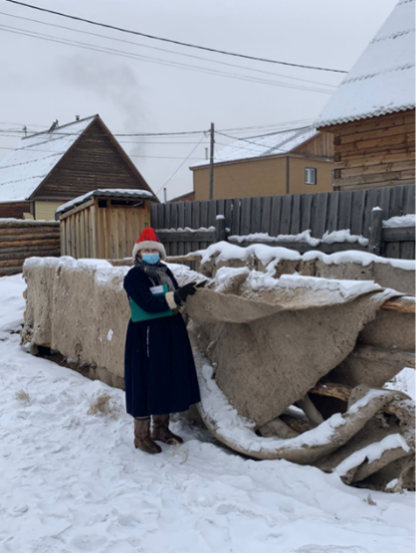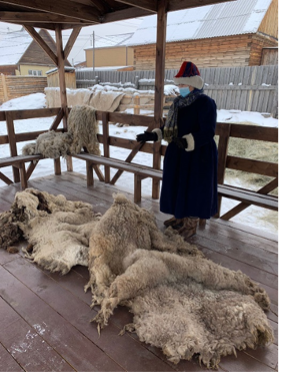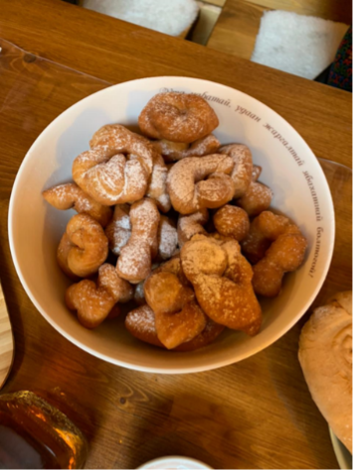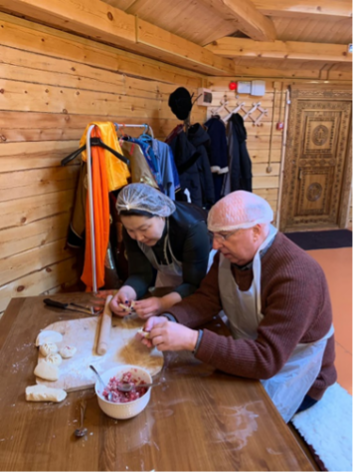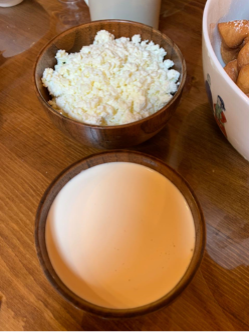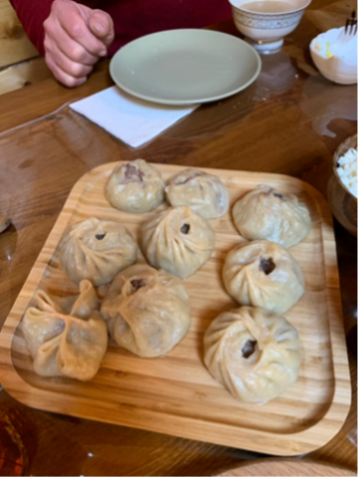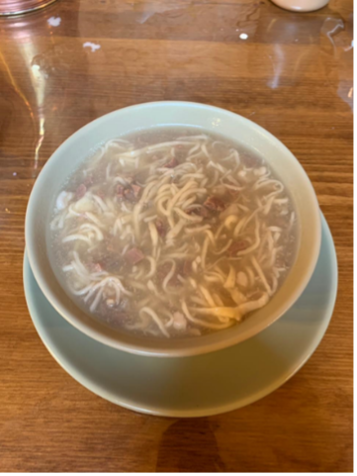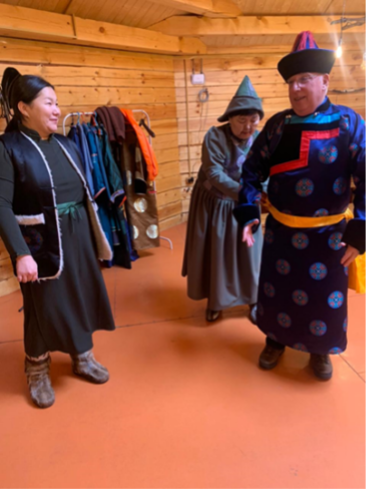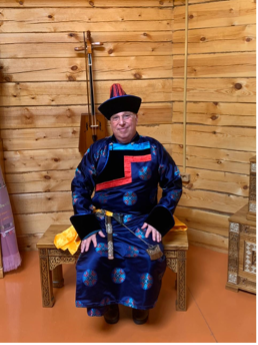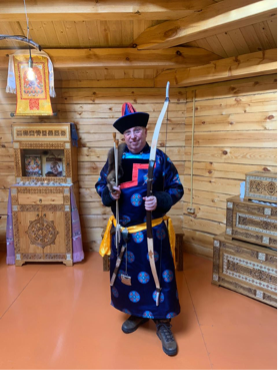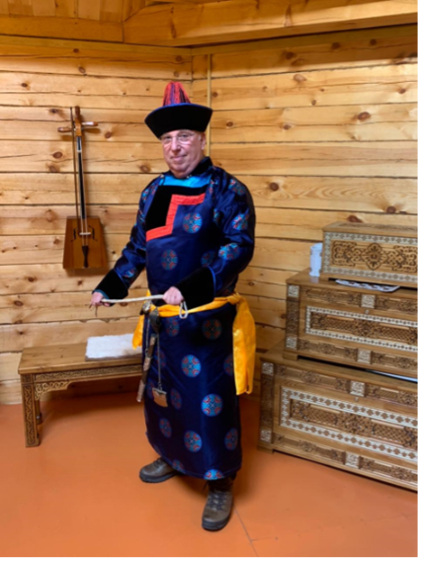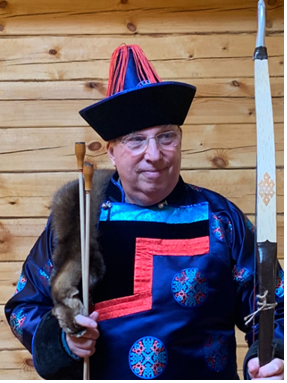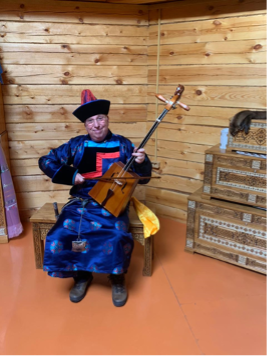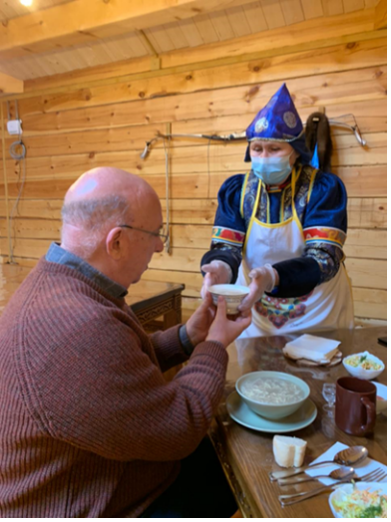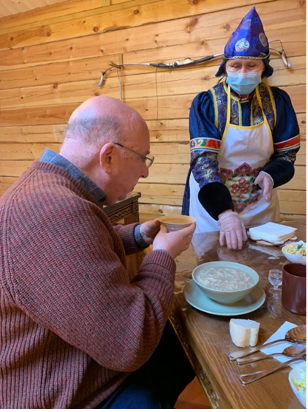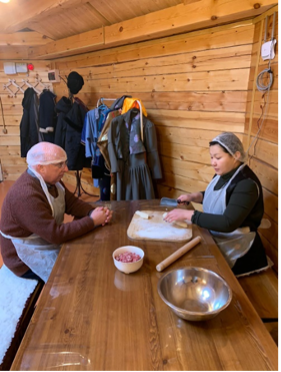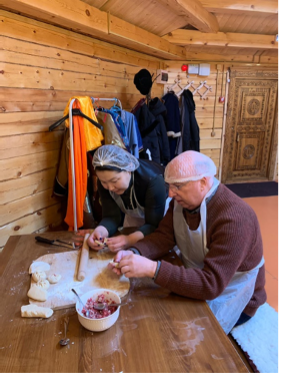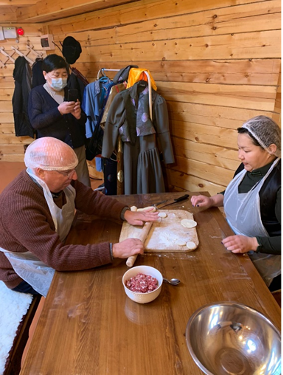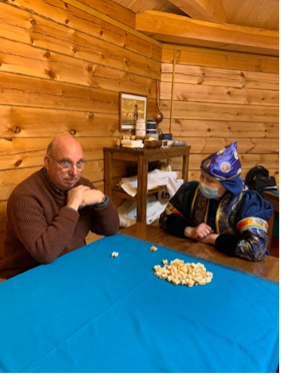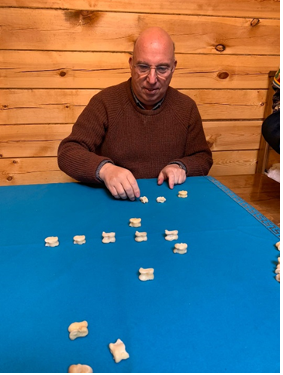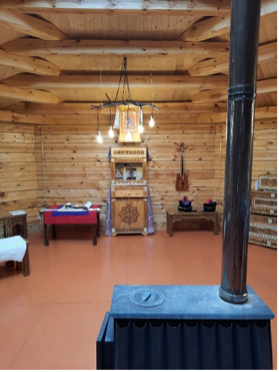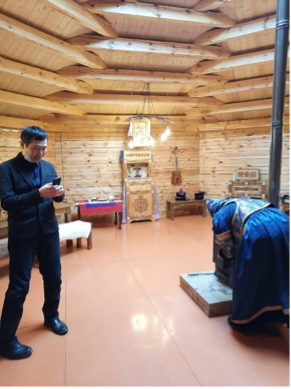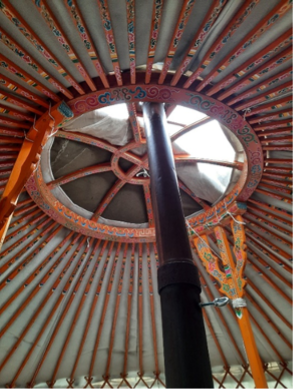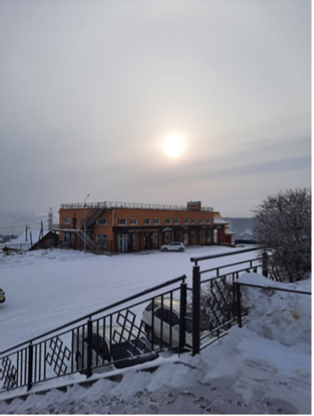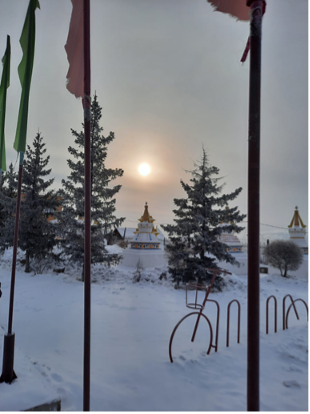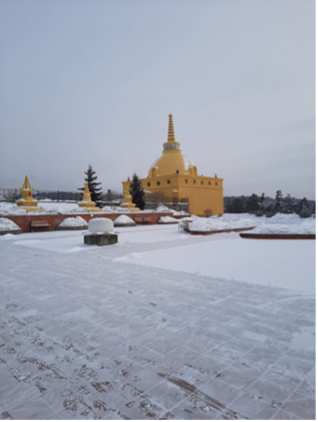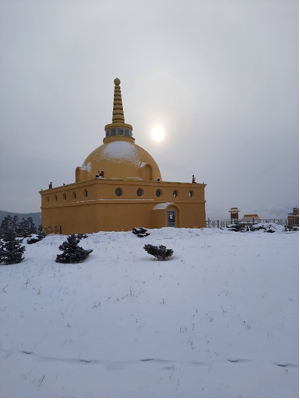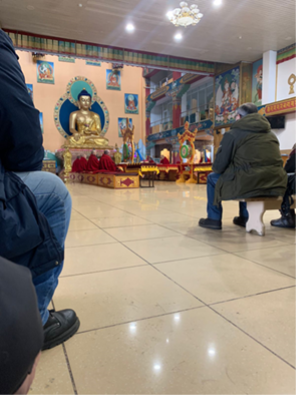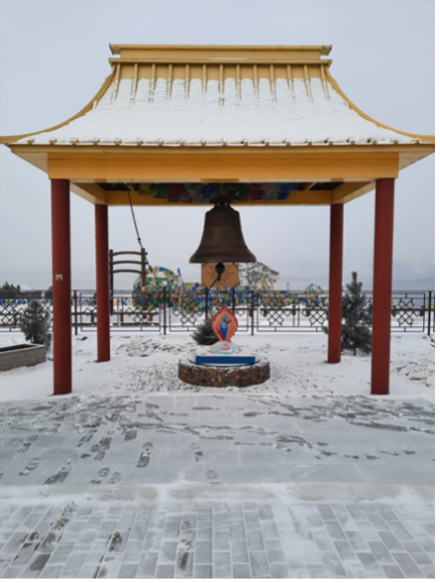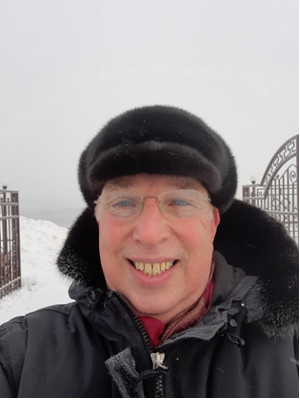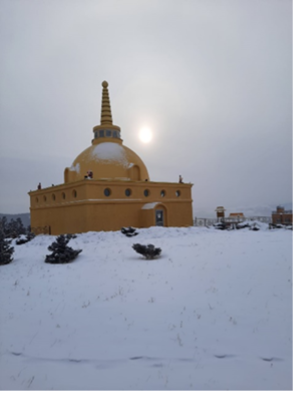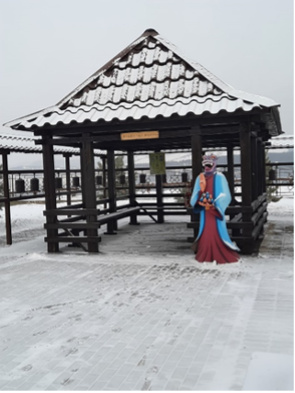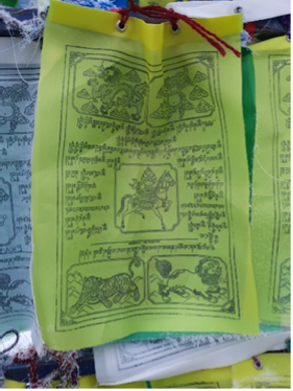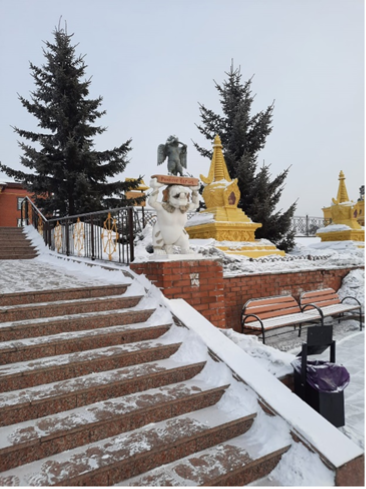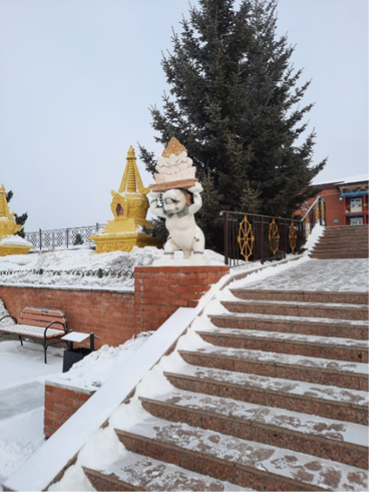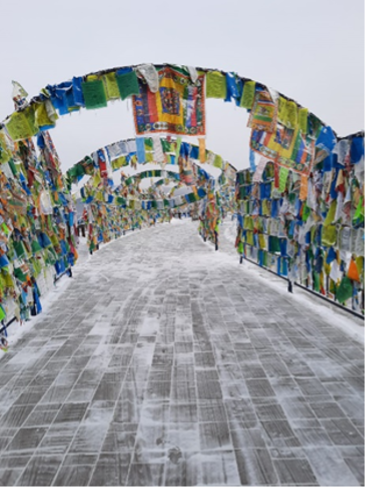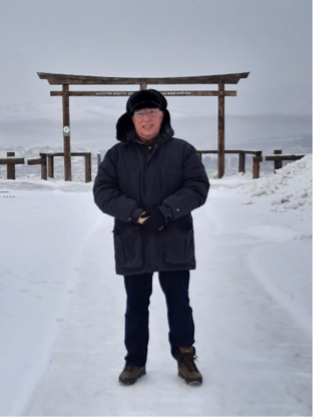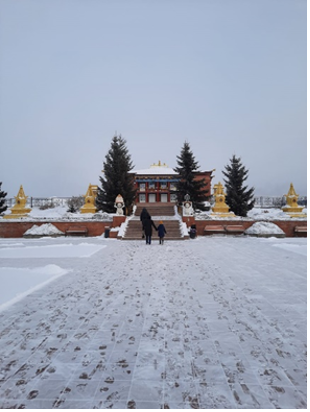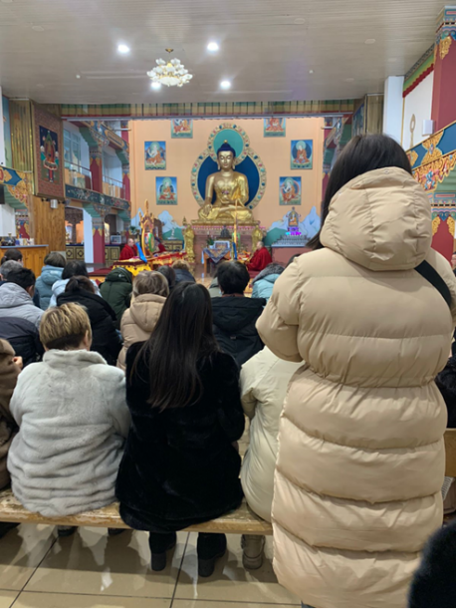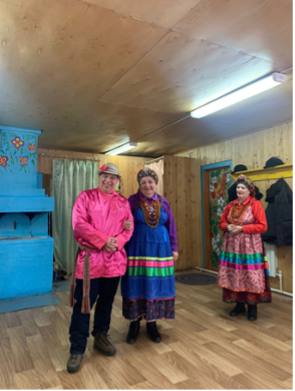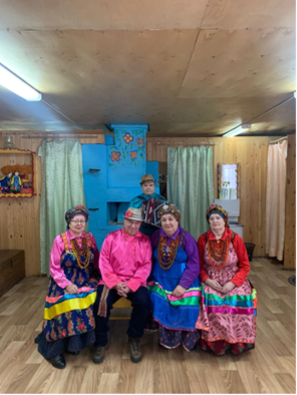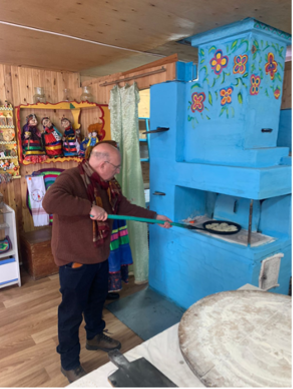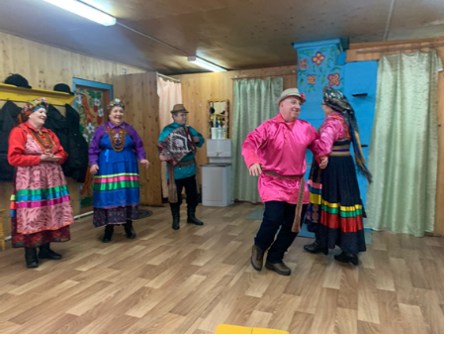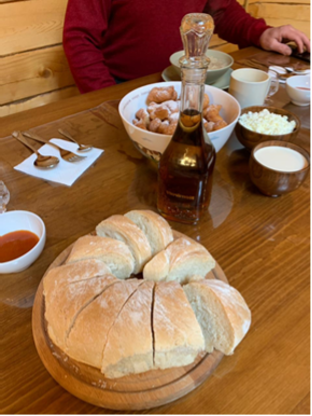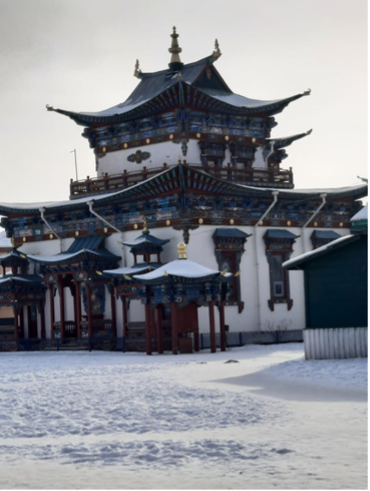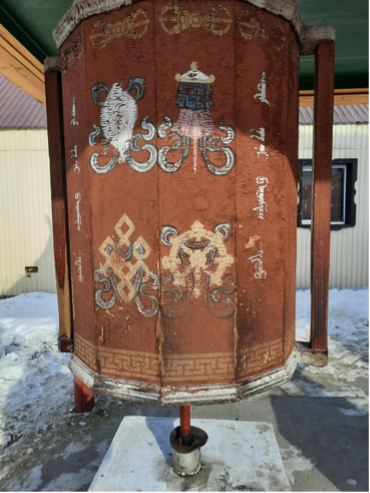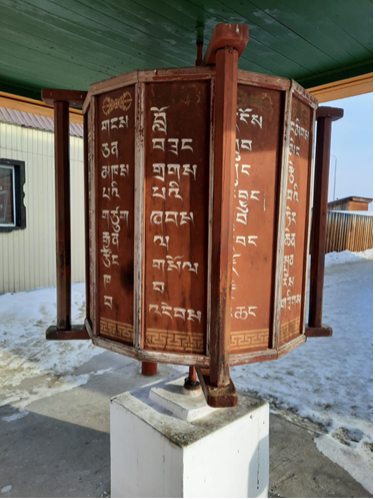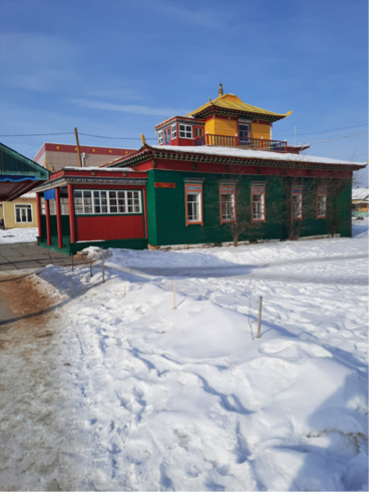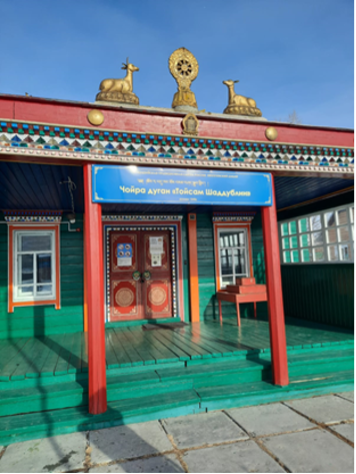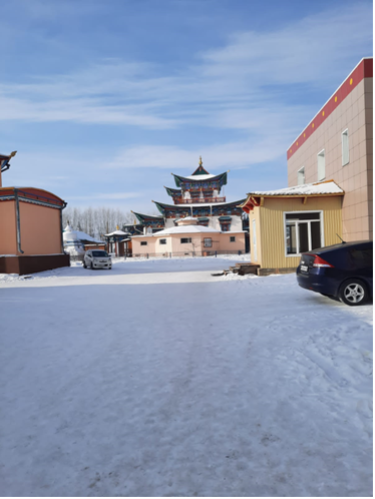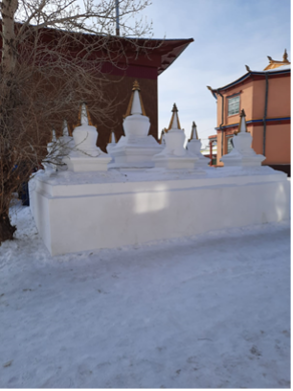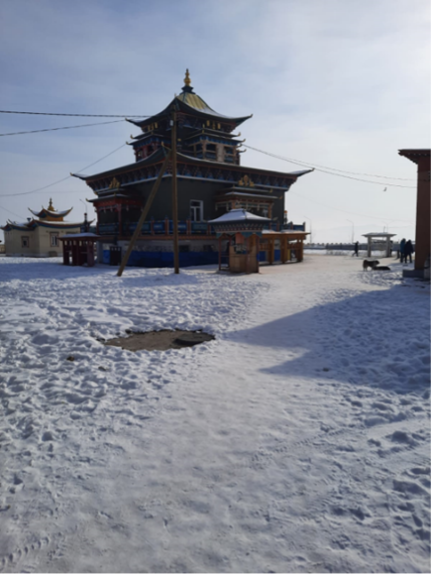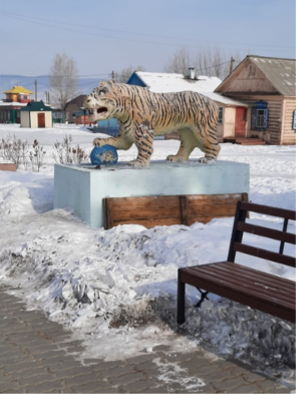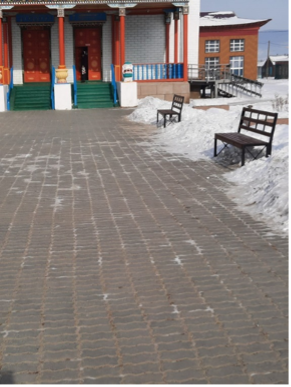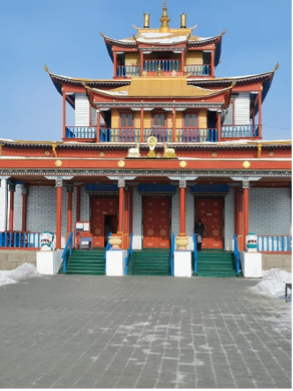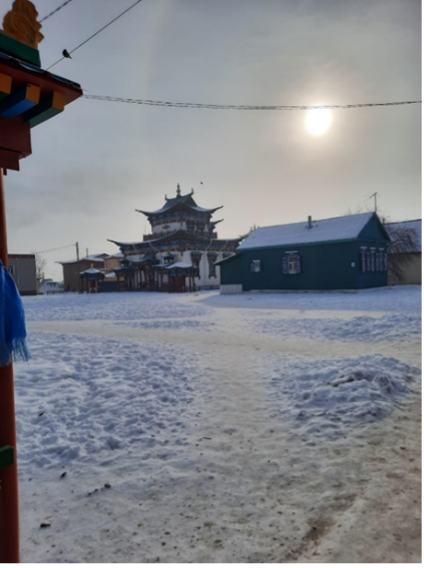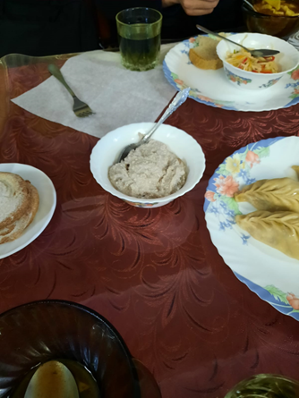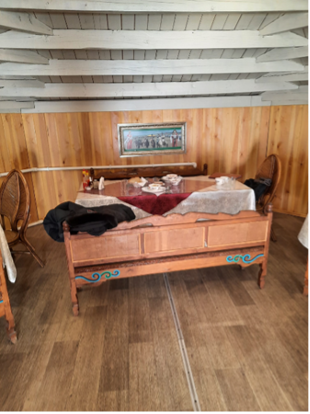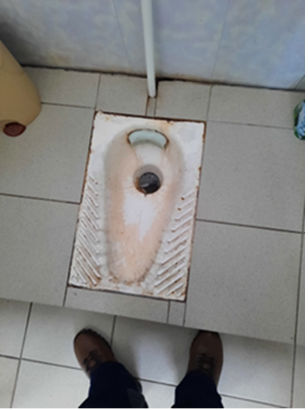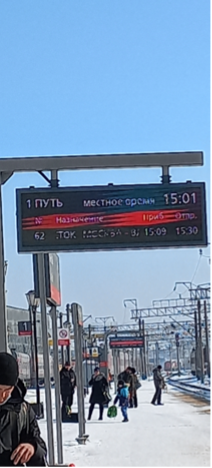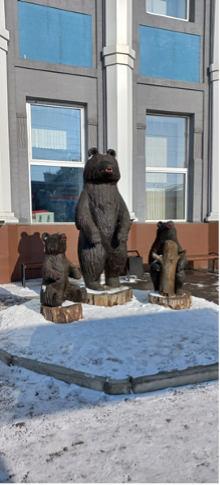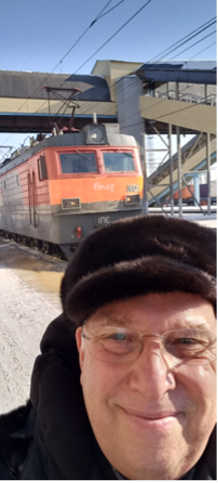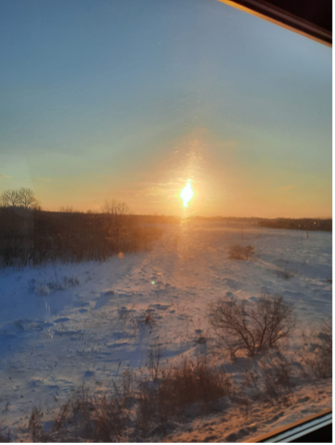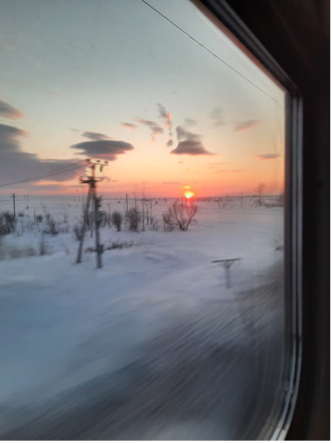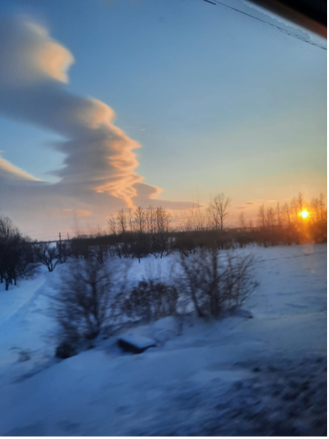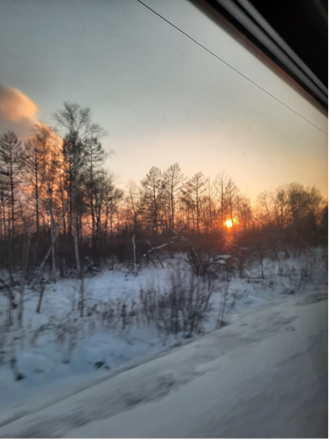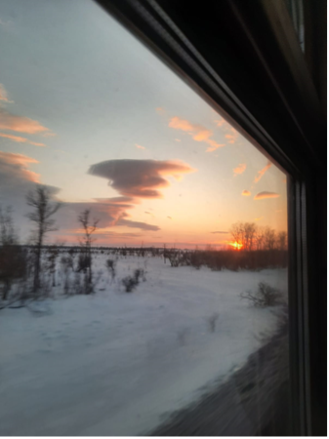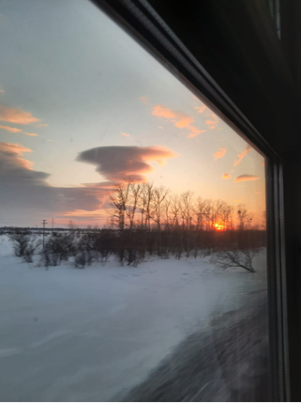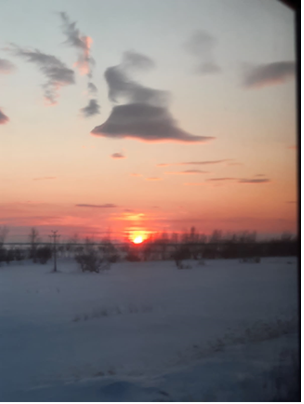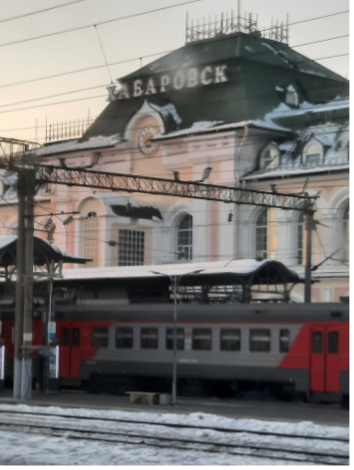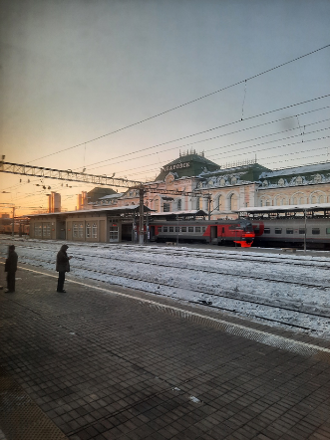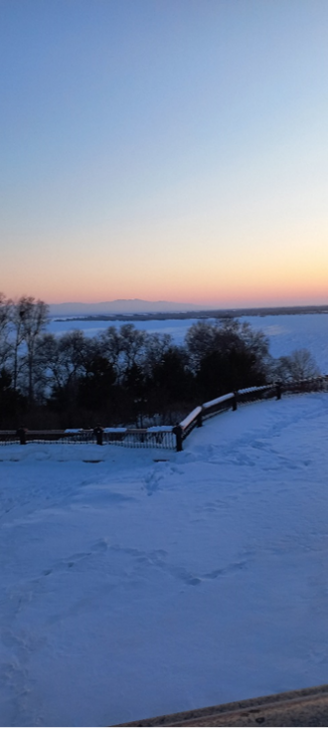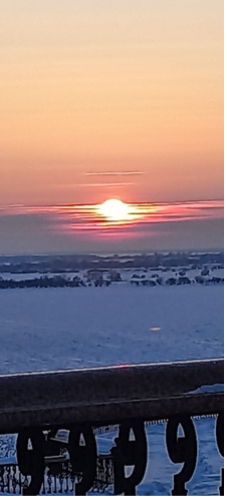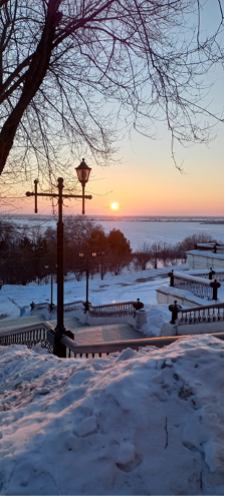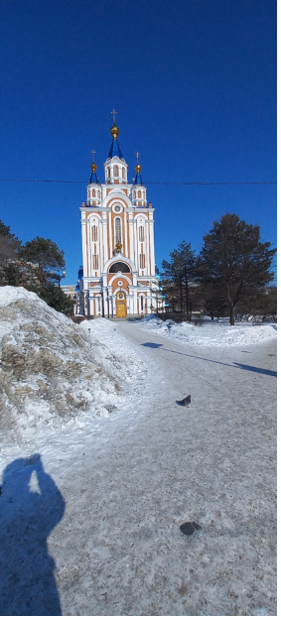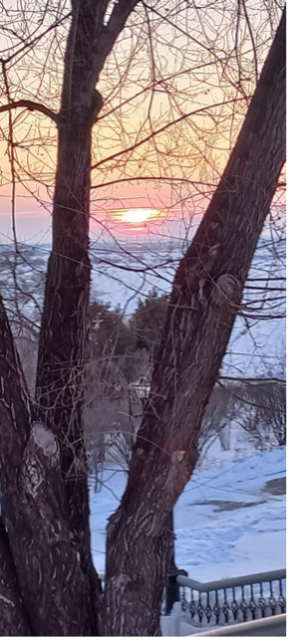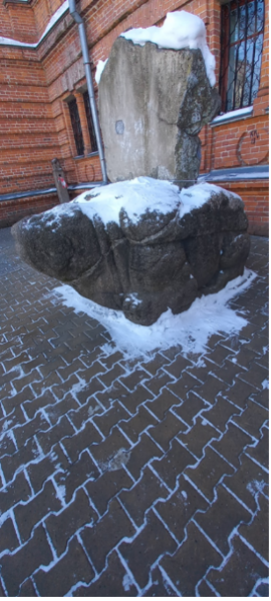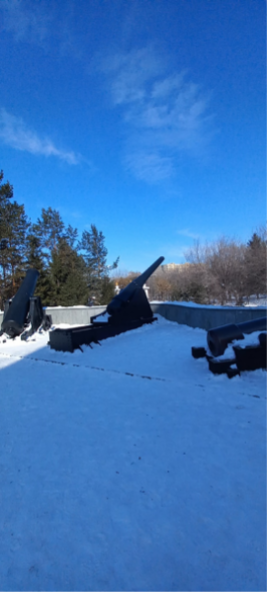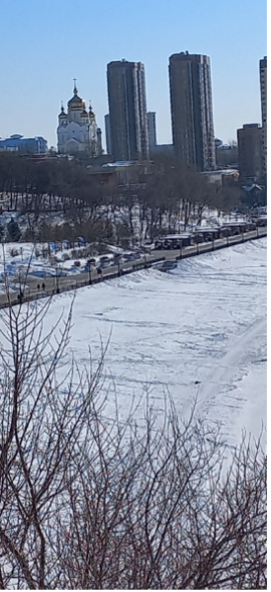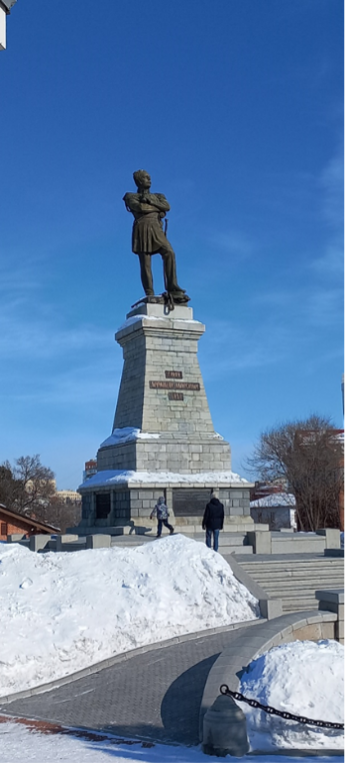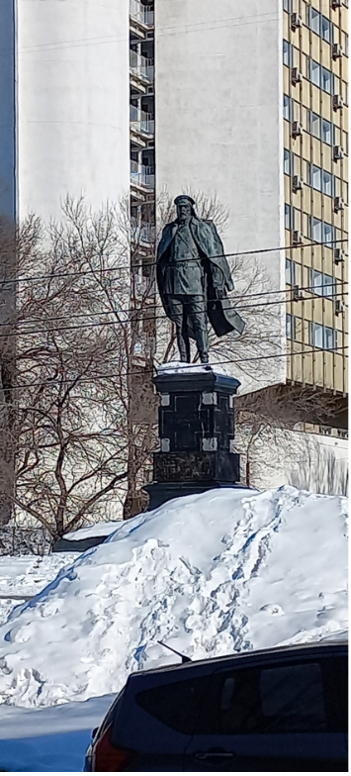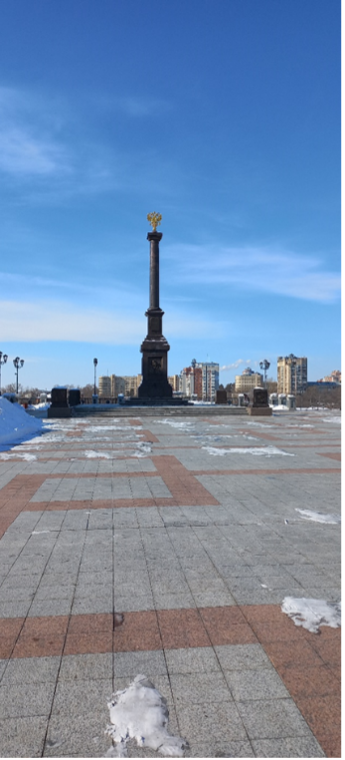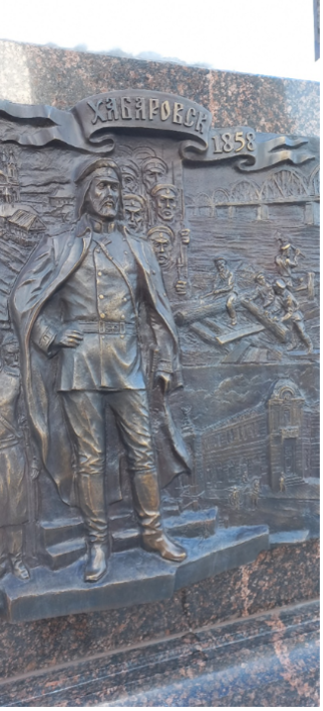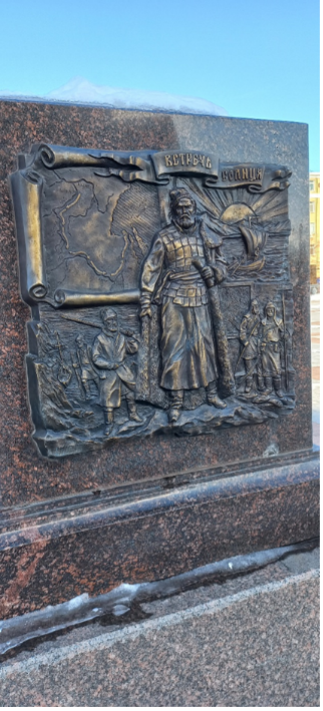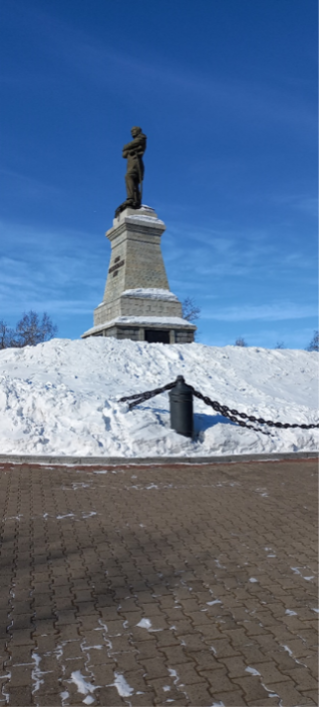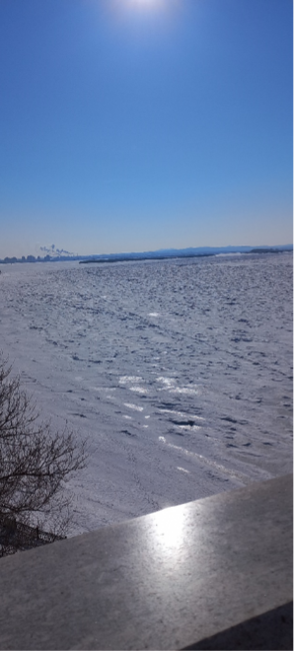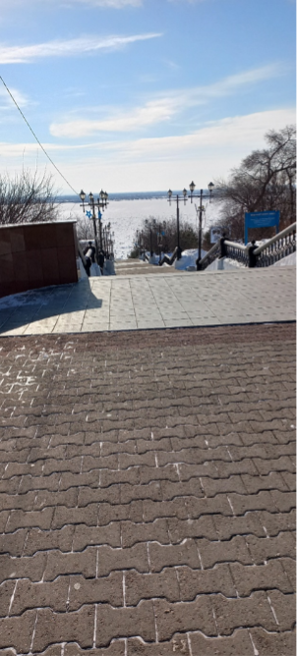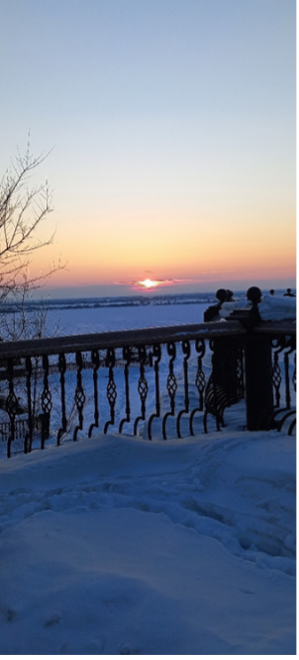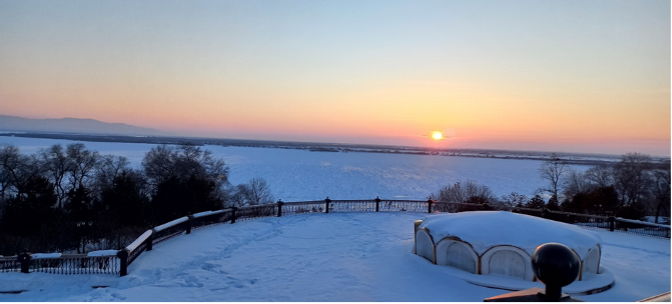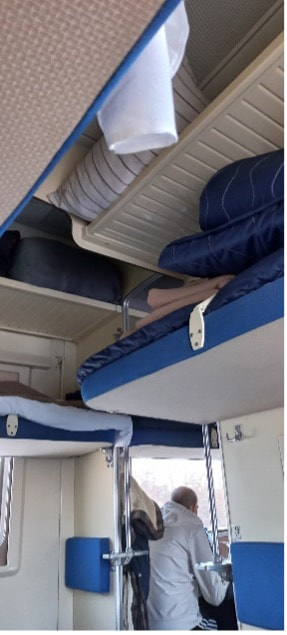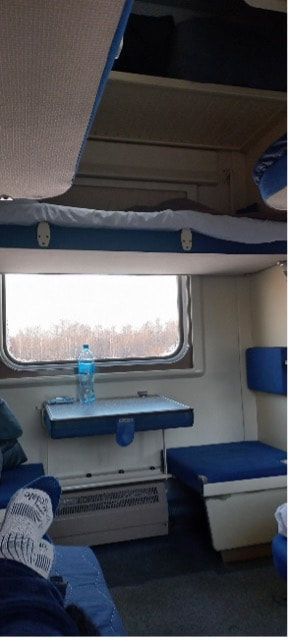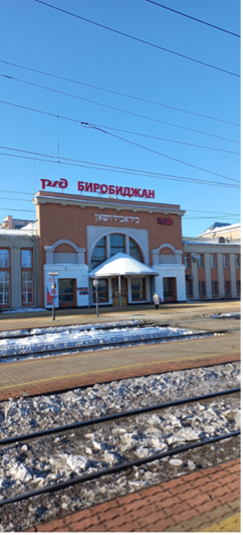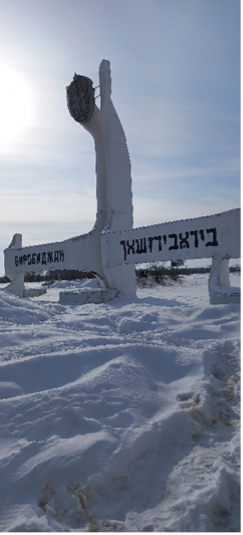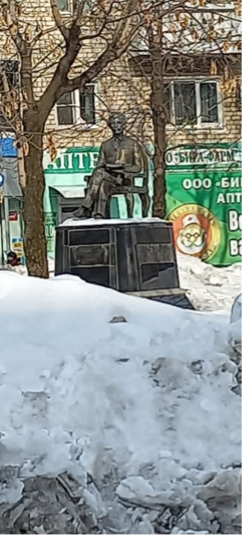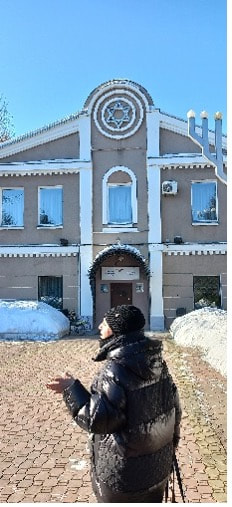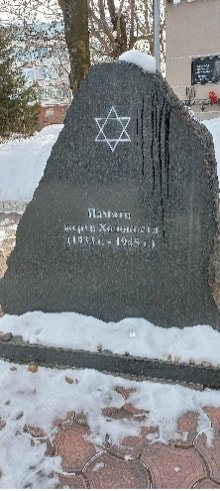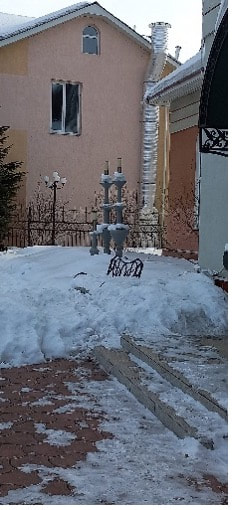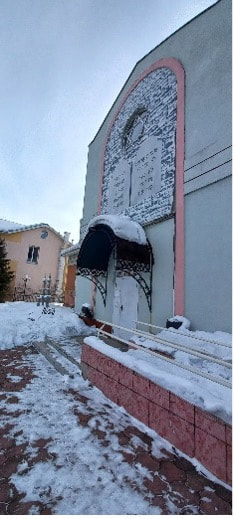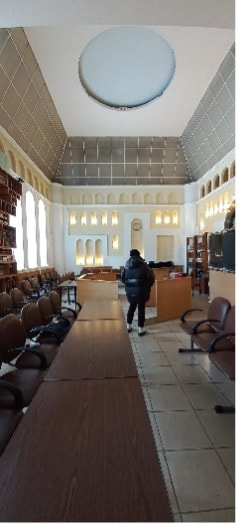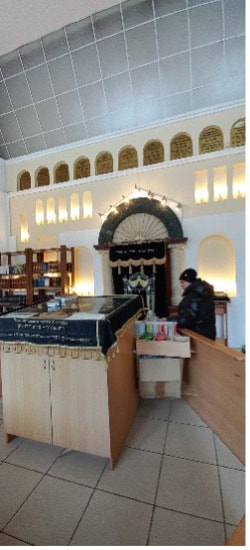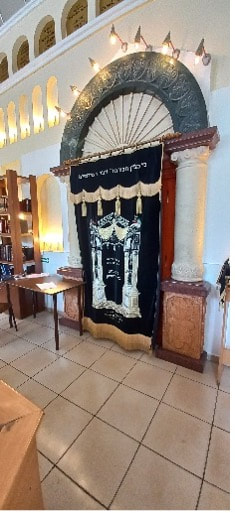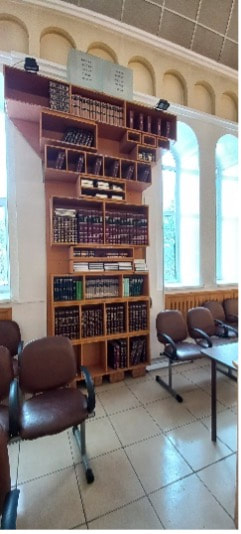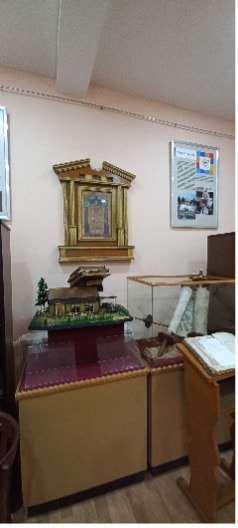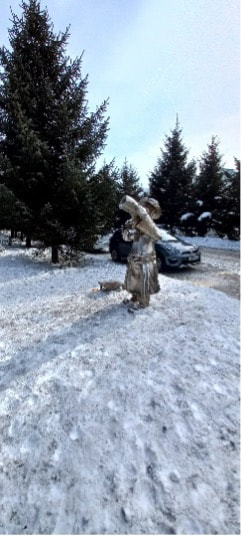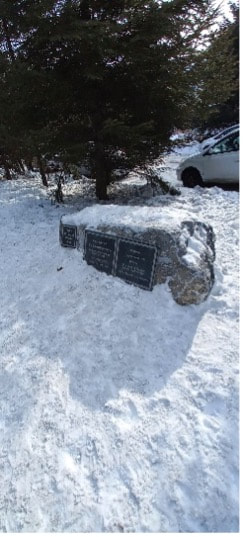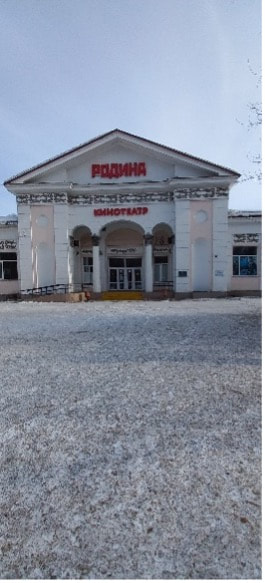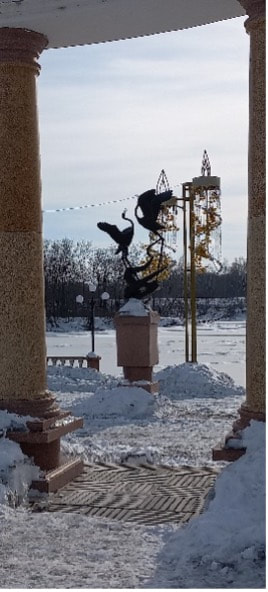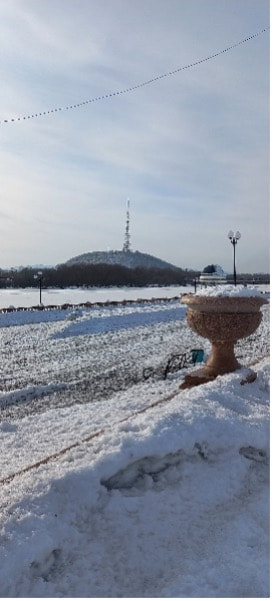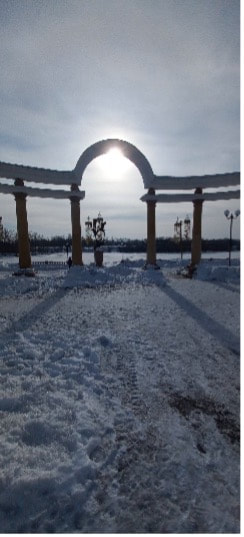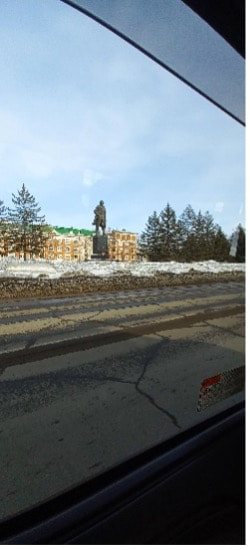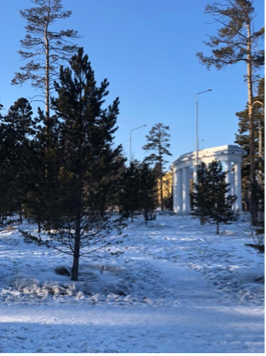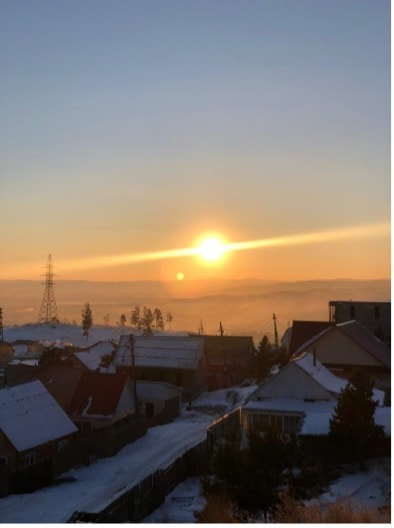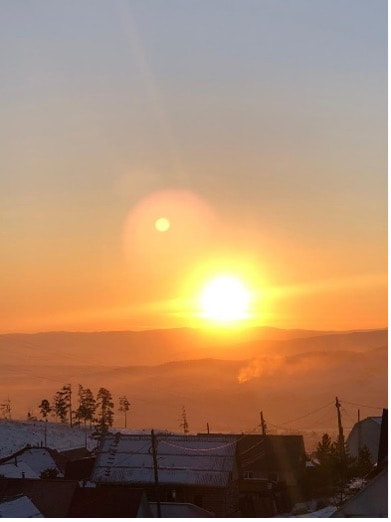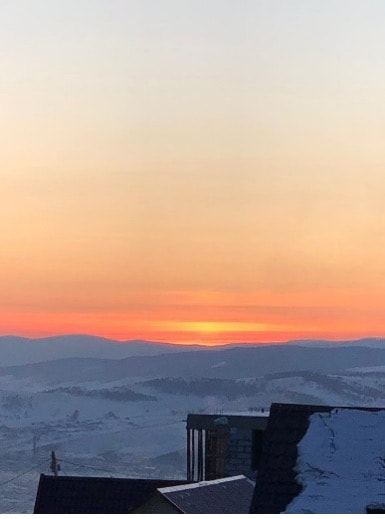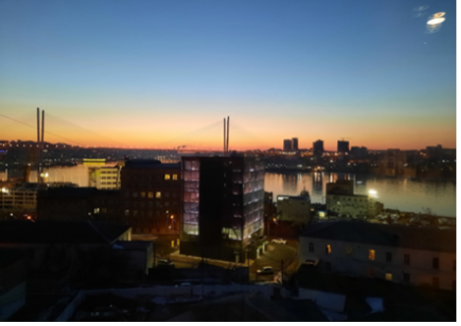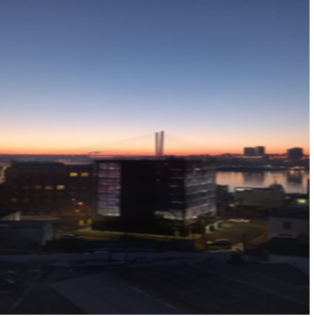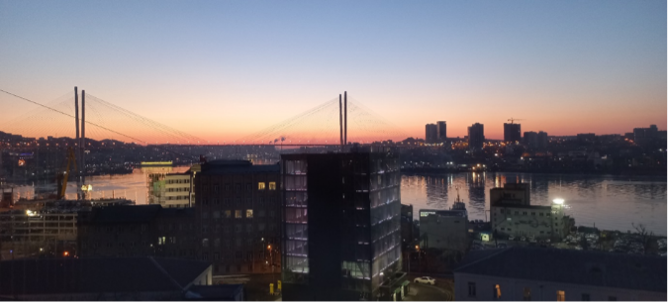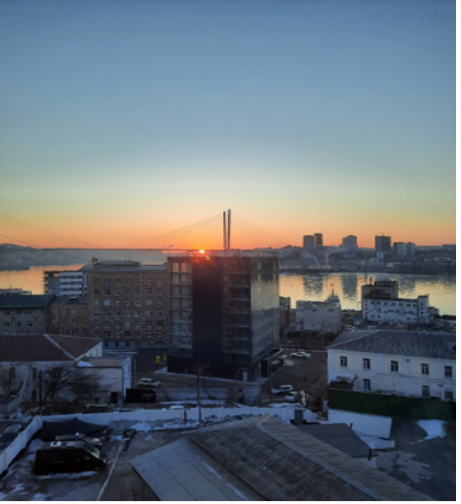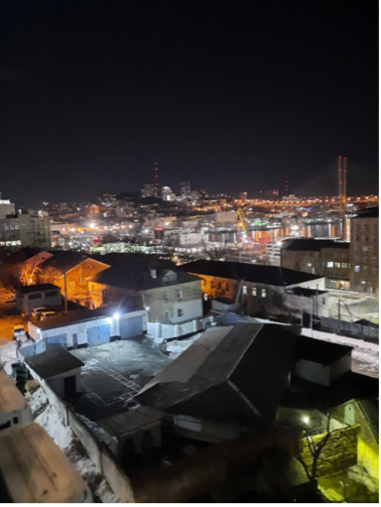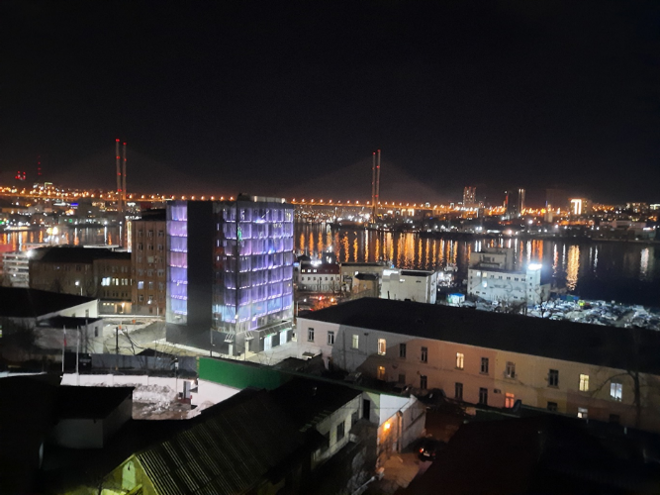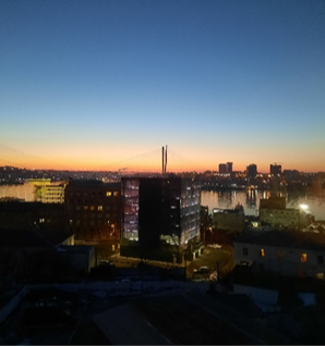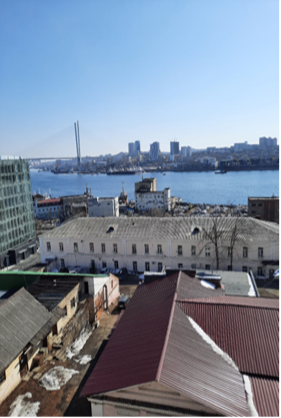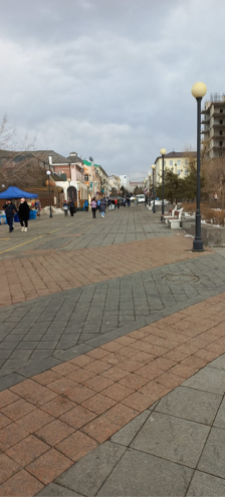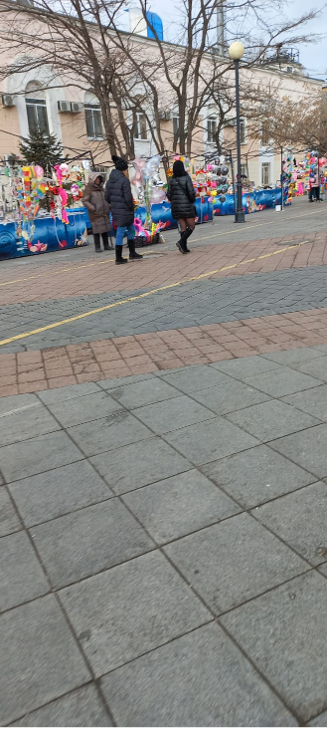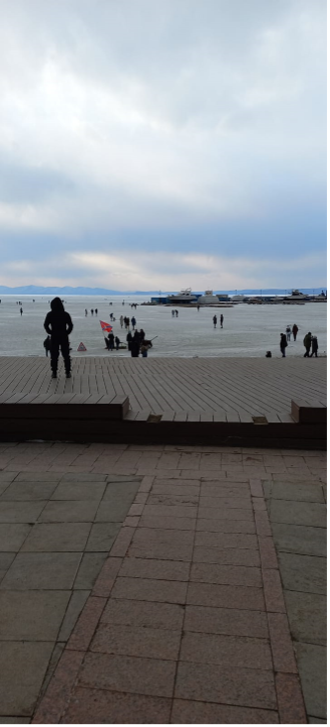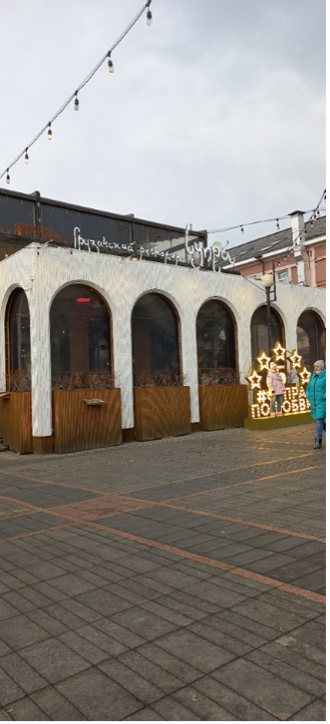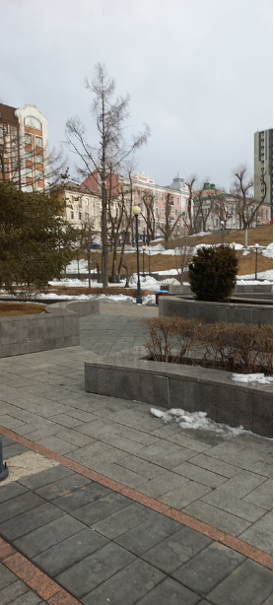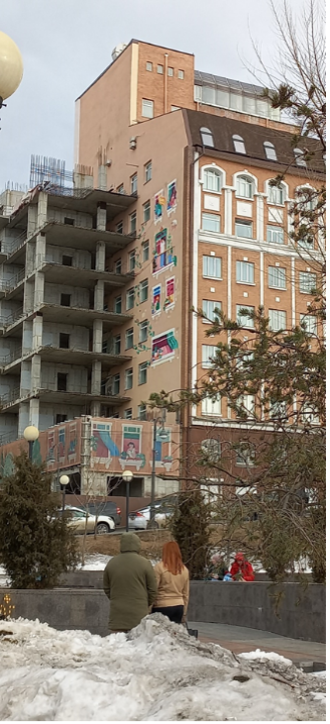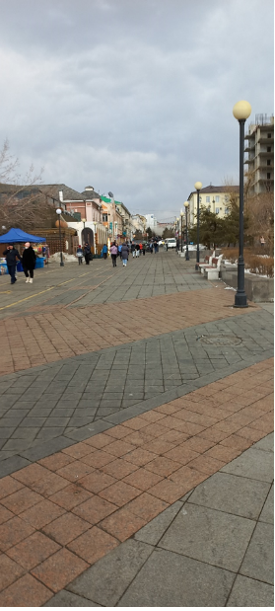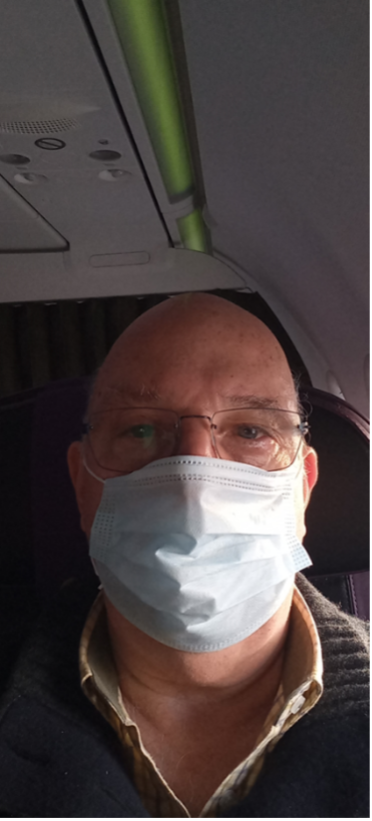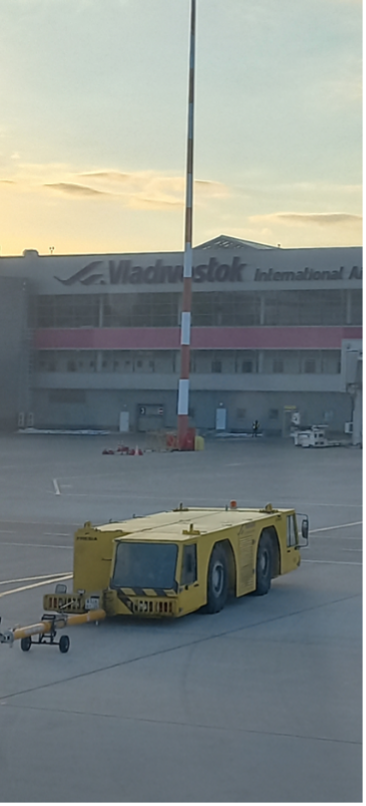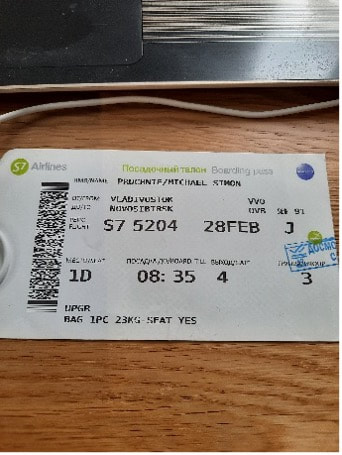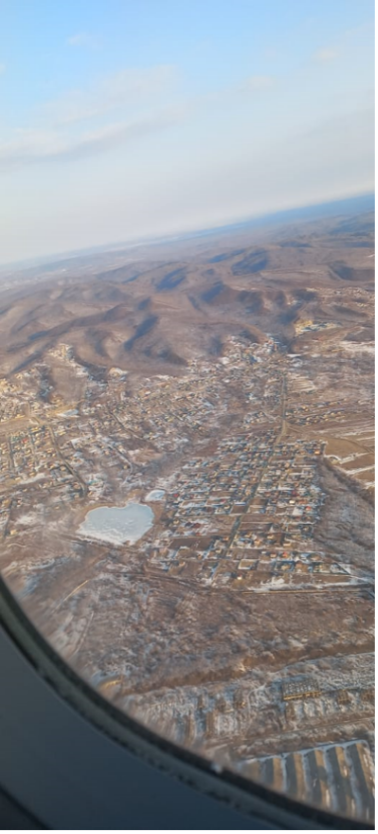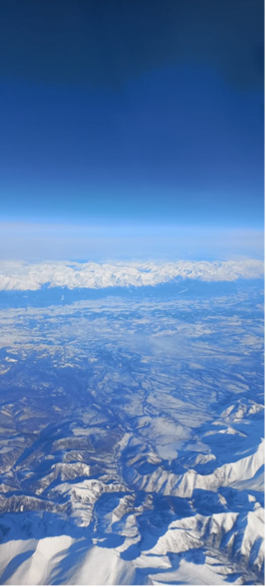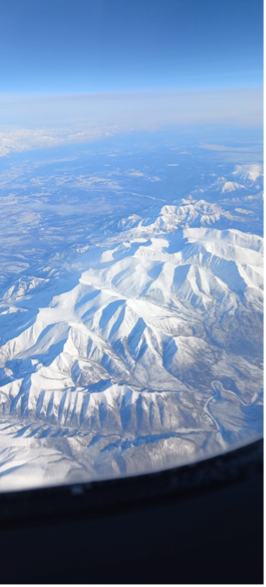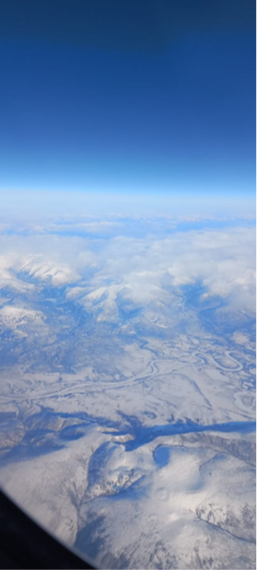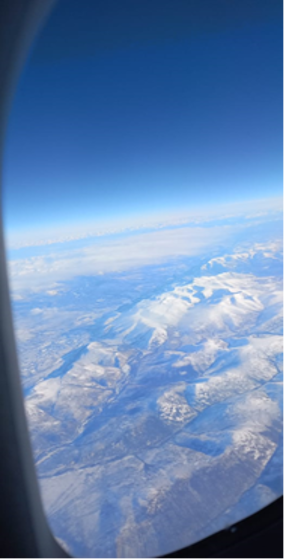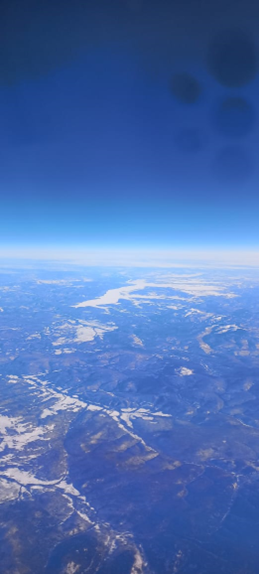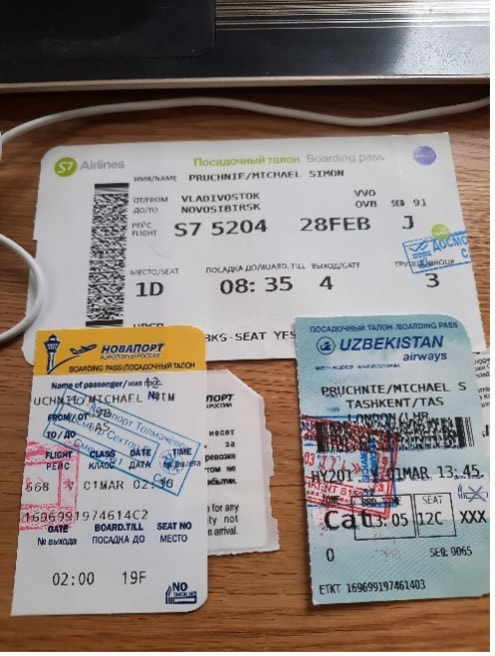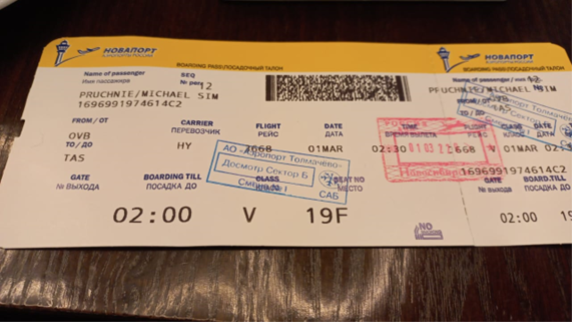18th February 2022
Early morning it was back in the train to Ulan Ude along the southern shore of Lake Baikal and then towards the Mongolian border which was closed due to Covid restrictions.
The journey was relatively short but the scenery along the shore was wonderful. Luckily, I was on the perfect side of the train to sit quietly and just watch the progress of the train along the southern edge of the lake and then onto Ulan Ude.
It gave me a chance to see the size of the lake and the lack of industrialisation and civilisation along the lake shore. Apart from small settlements and the very occasional summer port the scenery was very barren and desolate with endless and flat snowfields with very occasional trees. This was very different to the start of the trip where the scenery was dominated by fir trees and later with Siberian silver birch trees.
Arrival in Ulan Ude
To see and experience Buddhist temples and Buryrat ceremonies
The Buryats are a Mongolian people numbering at 516,476 (at the last census) , comprising one of the two largest indigenous groups in Siberia, the other being the Yakuts but in Ulan Ude , Buryats are Buddhist rather than Shaman in culture as are their compatriots in Mongolia .
The impression of the city when I arrived was one of chaos and lack of traffic system and at first I felt as if I was in another country rather than Russia. Also, the air was very heavy and polluted which I later understood was because their power stations are all coal fired and due to the geography of the city the pollution was trapped under the cloud cover, so I was happy to leave the city and start with the tours the following morning.
19th February Tours
One of the main features of Ulan Ude is Soviet square with the world’s largest head of the Vladimir Lenin, standing 13.5 metres high and weighing 12 tonnes and made from Bronze. It had to be shipped in parts by rail and then installed in one go on a granite pedestal. The square was full of ice carvings and children were playing in the square, which was lovely. The square is surrounded by typical soviet architecture and buildings and we briefly visited the old Soviet hotel which is still favoured today by the political elite (it is also surrounded by security buildings). Next to the monument to Lenin, stands a People’s Khural building, the residence of the Buryatian President. While behind the enormous head of the leader, there is a building of the House of the Soviets with main ministries of the RB Government and city administration offices.
Most people do not realise that it was Stalin who reversed Soviet laws and allowed the continuation of Buddhist culture in Russia as practiced by the Buryats
From this centre visit (very fast) we drove to the countryside to experience two different typical cruise and cultural tours of the region. The first was the most interesting and culturally fascinating and the second was rather disappointing to say the least. However, I was determined to make the best of the visit and get maximum feeling for the people and the culture as well as the traditions.
The afternoon with the Buryat Buddhist family and typical experiences and traditions was a wonderful experience both from the point of view of learning and meeting wonderful people but also having a very different experience and just unwinding after the trip so far.
The traditions of the Buddhist Buryat community are really interesting and although I did not get the opportunity to sleep in a Ger, I had the opportunity to have tea in a typical Ger and then lunch and entertainment in a solid Ger built with all the traditional design and simple beauty from local timber.
This family group were in fact of Mongolian descent and very well educated. Svetlana (the leader of the family) was a professor of linguistics (most French) and also a well-known traditional writer, Vika was also a professor and spoke very good English and was the main cook and teacher and Albina was their main singer and assistant.
They told me that for the previous 2 years they had not seen any foreigners due to Covid (the story as with other places) and were really very thankful that I was the first. This struck me as very poignant and knowing the war had started, I knew that I might be one of the last they would see for a while.
The visit was broken into three parts, learning about the traditions and also how Ger’s are constructed, then typical food and ways of dressing and entertainment and finally typical sports. I decided to play my part in the process and entertainment and did my best to make everyone laugh and also enjoy the meeting. To be honest, given my innate shyness I really excelled myself.
I count myself lucky to experience the traditions and to learn more about an interesting culture but also to have the opportunity to meet such lovely and warm people with a genuine interest in showing off their roots and life’s
I know the photos of me in traditional dress are “interesting “but, in truth I really enjoyed the experience and interaction with such lovely people. Those who know me realise that this is not something I normally enjoy but for a few hours or pleasant company and in an effort to understand the traditions and culture, it was fun .
20th February tours:
The visit to the Rimpoche-Bagsha Datsan in Ulan Ude was really overshadowed by the visit afterwards to the Ivolginsky Datsan but was nerveless very impressive. perched on the top of a local mountain in Ulan Ude, the Datsan has commanding views of the countryside and if there would have been no pollution, I have no doubt that it would have been very impressive. However, its location and isolation is inspirational to Buddhists to visit it and certainly it made an impression on me. I found the fascination of marble pathways and pavements very challenging for walking on the layer of ice and I had trouble occasionally of maintaining my dignity and avoiding slipping, so slow walking was the order of the day.
The air was fresh and sharp with a strong wind chill and I was told it was minus 30°C, certainly my cheeks and face were testament to the low temperature and wind chill. Walking around was interesting and as per tradition I was given a prayer sheet to hang on the prayer tunnels outside the temple buildings. The choice of yellow was related to my Chinese birth date and apparently just by hanging it up the wind would take my prayers along without the need to say anything.
We went to the main hall where the prayers and chants we being undertaken and again I was told that I was lucky as there was a full amount of Lama’s present including the senior Lama (8 in all). I was fascinated by watching the faithful sitting quietly, occasionally prostrating themselves in front of the lama’s and also going and paying for specific prayers to be made for themselves. The chanting was really mesmerising and calming however I was conscious about being there and suggested we leave and go to the main Datsan and see other temples. What really struck me was the way the faithful sat, quietly and calmly and even children did not fidget and make noises. Everything was really calm and peaceful
Visit to the “Non-orthodox” Ukrainian Christian settlement north of Ulan Ude
The late afternoon/early evening with the regional non- orthodox Ukrainian Christians in traditional evening entertainment was a little disappointing for various reasons.
It was a different experience to the Buryrat one and although it covered living style and traditions as well as food and dancing, in all honesty I did not really get the most out of the experience. In some respects, I found that it gave me an insight into how previous generations lived in the Russian Empire which was actually interesting, I found the experience very tiring and a little boring to be honest. But I did my best to join in and show interest and attention.
Visit to the Ivolginsky Datsan:
The most fascinating Buddhist temple that we visited (of the two of the main ones in Ulan Use) was the Ivolginsky Datsan (Buddhist monastery). It is located at the foot of the Khambar-Daban mountain range 30 kilometres away from Ulan-Ude.
As a historical background note, the Ivolginsky Datsan opened in 1945. It’s the residence of Pandito Hambo Lama, the head of the Buddhists of Russia. The monastery’s main relic is the body of Pandito Hambo Lama the 12th, which is considered to be incorruptible and lies in a glass sarcophagus. The Buddhist monastery has a Buddhist University for the novices.
It was visited by Dmitry Medvedev when he was president in 2009 and then a few years later by Vladimir Putin and is regarded as the main Buddhist temple in Russia.
I was given a number of honours in the temple in that I was the first foreigner to visit it since Covid and allowed to eat in the Presidents Ger and the meal was catered by the head of the Datsan support committee herself. interestingly the meal was all hand made to her family recopies which she assured me were generations old. It was delicious to be honest. A Russian tour group tried to join us and were rather un ceremonially shown the ay to the canteen and were rather aggrieved to say the least.
The Datsan is a series of buildings, temples and accommodation with traditional prayer units which have to be rotated as you visit the Datsan. Each temple was different and in essence was interesting leaving me with a wish to understand more about Buddhism afterwards.
Lama Simeon
However, there was a very strange incident in one temple which had a profound effect on me which to this day still resonates in me. We were in one temple and there was a Lama tidying up some artifacts and cleaning when we walked in. His name was Simeon. Apparently, he was well known and unlike the other Lama’s was Russian not Buryat from Samara. I was told he was a very quiet man and normally does not interact with visitors unless there was a reason.
His smile was infectious and he asked my guide what my name was and where I came from and then walked away from us. He suddenly turned round and asked if he could bless me.
The Guide was surprised and said in all the years he had taken visitors round the Datsan no one was ever blessed.
It was an amazing feeling as he placed his hands on my head, my mind just moved very quickly and memories and inner- most emotions from the past came and went, it was like a whirlwind of emotions and seemed to last for a long time, rather than the few seconds of contact. I was shocked and really initially unsettled by the experience but quickly felt calm and rested very quickly. I have never experienced such a feeling and effect and rather than unsettling me , it was very reassuring and pleasant .
He smiled, wished me a safe trip and said perhaps in the future we will meet again as he was certain we will meet somewhere again.
The guide was in shock and for the rest of the day kept on talking about this event over and over and afterwards told me that he did not understand why the Lama acted that way and that he must have felt something or some reason he needed to do it. He kept on saying that I should feel very blessed and lucky.
Either way, I took it as a complement.
